- Botanical Description
- Chemical Composition
- Therapeutic Properties
- Procurement of raw materials
- Methods of application
- Precautions
Caesar dioscorea is a herbaceous plant, a representative of a fairly numerous genus Dioscorea of the Dioscoreae family. In some countries and various medical sources, it occurs as wild yam. Thanks to the valuable healing properties of the root of the plant in the people, it was called "the root of youth".Funds based on the root of Dioscorea help with atherosclerosis, headache, hypertension, tinnitus. This species of the genus Dioscoria is endemic and occurs mainly in the Caucasus and the western part of Transcaucasia. Its natural reserves are very limited. Previously, only selected people could be treated in the territory of the former USSR, so the dioccasms of the Caucasus were sometimes called "the Kremlin grass".Currently, effective methods of plant cultivation have been developed, so it is no longer such a deficit and accessible to everyone.
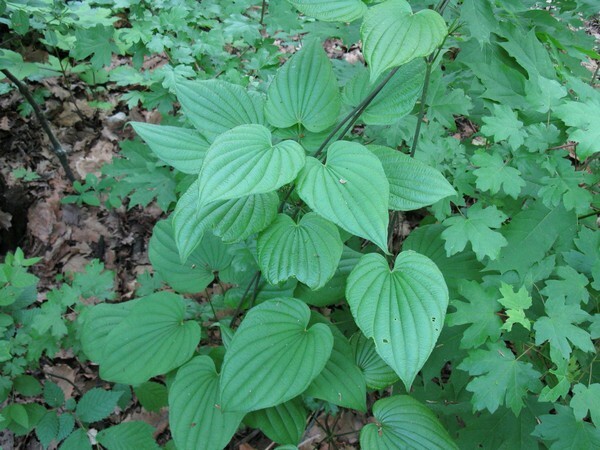
Botanical description
The Caucasian dioscorea is a perennial vine with a life span of more than 40 years. In natural conditions, it grows in oak and oak-hornbeam forests, on felling areas, in slopes, in thickets of bushes. It is suitable for neutral, clayey and stony soil. Reproduction is carried out vegetatively and seeds.
Rhizome powerful, thick and long, horizontal, with brownish brown outside. Along all along it is covered with numerous hard roots. As the plant grows, the soil extends to the depth of 1.5-2 m.
Stems curly, unbranched, their length can reach 2.5-4 m.
The lower leaves have a whorled arrangement, and the upper leaves are regular or opposite. Leaves petiolate, cordate-oval in shape 6 - 15 cm long, pointed at the apex, with slightly convex edges, separated by arcuate veins. On the lower side are pubescent.
Interestingly: The name of the genus Dioscorea comes from the name of the ancient Greek military doctor, naturalist and pharmacologist Pedonia Dioscorides, who described this plant in his writings.
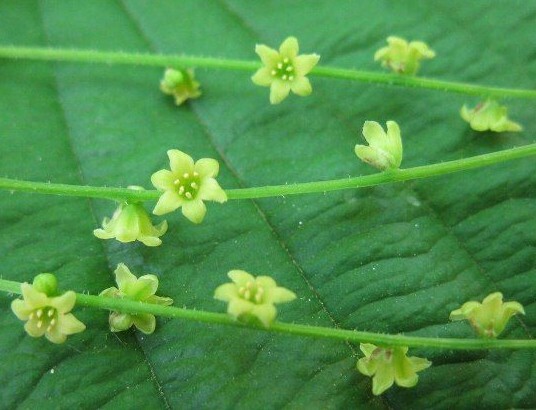
The flowering period is from May to July. The plant is dioecious. The flowers are small, unattractive( only 3 - 4 mm in diameter) with a simple perianth of 6 petals, same-sex, yellowish-greenish color. Staminate flowers are located 1 to 3 in a bundle in axillary hands, and pistillate flowers are singly in the hands.
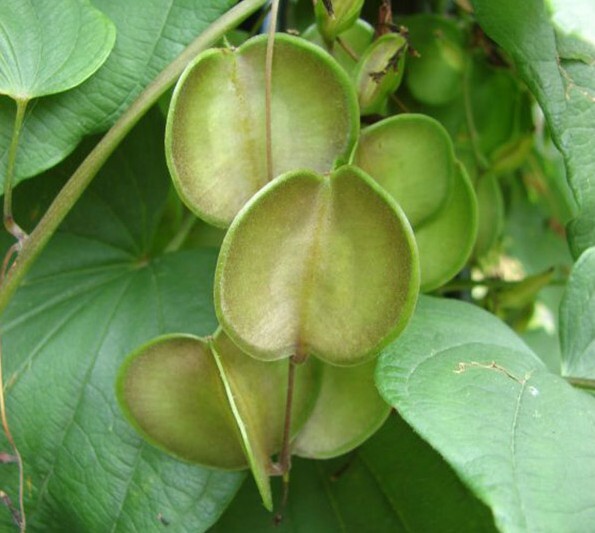
Fruits ripen from July to September. They are trihedral tri-nest boxes measuring 2.5 - 3 cm with three membranous wings. Seeds have flat pterygoal outgrowths, providing them with good volatility.
Chemical composition of
The rhizomes and roots of Caucasian dioscorea contain up to 10% of the sum of steroid saponins, diosgenin derivatives, the most significant of which are dioscin, protodioscin and protogracillin. These compounds have a wide range of activities. In particular, they are able to bind to cholesterol and remove it from the body, as well as destroy complex complexes of proteins and lipids formed on the walls of the vessels and are the basis for the further formation of atherosclerotic plaques.
In addition to saponins, wild yam contains fat-like substances, trace elements chromium and selenium, starch.
Therapeutic properties of
The means based on Caucasian dioscorea are especially effective for the elderly, since they:
- have an antisclerotic effect;
- reduce blood pressure;
- expand peripheral vessels and improve coronary circulation;
- normalizes the level of cholesterol in the blood;
- reduces blood clotting.
The listed therapeutic properties of Caucasian dioscorea are successfully used in folk medicine for the prevention and treatment of such age-related diseases as atherosclerosis, diabetes, angina pectoris, cardiac rhythm disturbances, hypertension. With its application, there is an improvement in overall health, mood, memory, sleep quality, cardiac activity, disappearance of noise in the ears and headaches. The plant can be used to prevent heart attacks and strokes, to improve the condition after them.
Interestingly: Thanks to its beautiful bright green summer and golden-yellow autumn leaves, the Caucasian dioscorea has found application, not only in folk medicine, but also in landscape design. Its stems can be used to decorate arbours, fences, fences.
Dioscorea root also has the following therapeutic properties:
- shows a diuretic effect;
- stimulates the secretory activity of the gastrointestinal tract;
- improves liver and bile duct function;
- has an anti-inflammatory and antiallergic effect;
- improves overall physical condition, helps with fatigue;
- has a sedative effect on the nervous system, removes irritability.
It is effective for violations of adrenal function, autoimmune diseases, with vegetovascular dystonia, gout, rheumatoid arthritis.
The plant is successfully used to restore vision in cataracts and other eye diseases( conjunctivitis, keratitis, blepharitis).Decoctions and infusions of plants are taken internally for some skin diseases: psoriasis, eczema, neurodermatitis, dermatitis. External powder from the root is used for frostbite and furunculosis.
The composition of Dioscorea of the Caucasus includes the compound diosgenin, which is a precursor of steroid hormones - cortisol and progesterone, and has estrogenic activity. Wild yam for women can be used for certain hormonal disorders, premenstrual syndrome and to reduce unwanted clinical symptoms during menopause.
Based on the roots of the plant, they make a Novogalenic preparation - Disponin tablets, which contain not less than 30% of water-soluble steroid saponins. He is appointed in the complex therapy of cerebral artery atherosclerosis, general atherosclerosis in combination with hypertension, cardiosclerosis.
Procurement of raw materials
As a medicinal raw material, the roots and rhizomes of the plant are harvested. It is believed that the most suitable for therapeutic purposes are plants that have reached 25 years.
The collection can be carried out from the end of April until the end of October. Do this as follows. The rhizomes are excavated, the remains of the stems are separated from the ground, and then cut into pieces, washed with cold water and dried, distributed in a thin layer, in air or in dryers at a temperature of no more than 50 ° C.
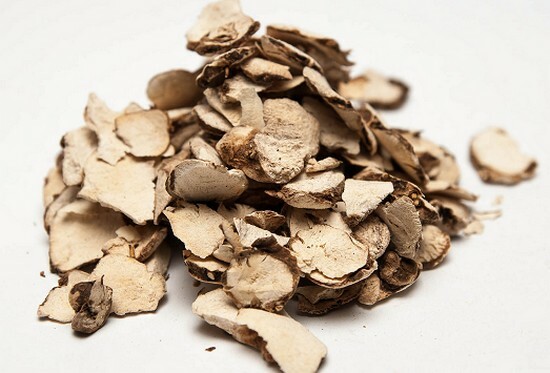
Dried rhizomes and roots of Caucasian dioscorea have a bitter, slightly burning taste, odorless. At the break they are whitish, and the surface outside is light brown. Store finished raw materials should not more than 3 years in a ventilated room in bags of paper, boxes or boxes.
Important: Wild yam belongs to relic plants listed in the Red Data Book, therefore for medical purposes only plants grown for this purpose specially under artificial conditions are currently used.
Ways of using
From roots and rhizomes of Caucasian dioscorea, tincture on vodka, decoctions, teas, infusions, dry powder is prepared. Given that the plant is listed in the Red Book and its independent collection and harvesting in special places can be difficult, you can use ready-made medicinal raw materials of dioscorea for the preparation of traditional medicinal products, which is sold in the pharmacy.
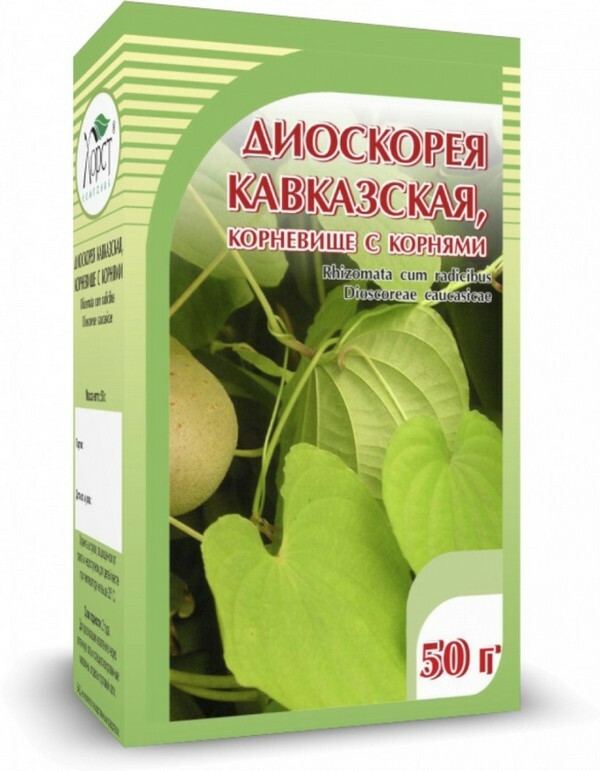
Warning: Ingest preparations from the root of dioscorea should be taken after meals, as they have an irritant effect on the digestive tract.
Tincture on vodka for heart diseases and post-sultural states
Dry ground roots( 7.5 liters) pour 1.5 liters of vodka and insist 10 days in the absence of light. Take 1 tsp.three times a day with warm tea. When all the cooked tincture of the Caucasian Dioscorea ends, its application continues again after a month's break. The treatment consists of 3 to 4 such courses.Tea for improving memory, sleep, prevention of atherosclerosis and hypertension
The crushed dry raw dioscorea is mixed with green tea leaves in a ratio of about 1 to 2. The resulting mixture is brewed as regular tea. Take in the morning once a day.
Remedy for atherosclerosis
Of the dried rhizomes of the plant, make a powder, grinding them in a coffee grinder or in some other way. Three times a day for 10 days, take 0.2 g of the obtained powder, eating it with a teaspoon of honey. Treatment continues for 3 to 4 months, making weekly breaks between courses.
Means for various chronic inflammatory diseases and allergies
The ground raw materials( 50 g) are poured with ½ liter of vodka and insist the obtained composition for one month, shaking regularly. After the passage of time, filter and drink the obtained vodka extract of wild yam three times a day for 30 to 60 drops, diluting them with water. Depending on the severity of the disease, the treatment period can be from 4 months to one year.
Root broth for hormonal problems and cardiac disorders
Powder, prepared from a dry root of the plant, in a quantity of 1.5 g is placed in a saucepan, poured into a glass of hot water and put on a water bath for 20 minutes. Then cool, filter, bring boiled water to the original volume. Take one month for 1 tbsp.l.three times a day. After a three-week break, repeat the reception. Treatment consists of 2 - 3 courses.
Precautions
When using funds from Caucasian dioscorea, contraindications are taken into account. These include:
- pregnancy;
- lactation;
- bradycardia;
- individual intolerance;
- allergy;
- lowered blood pressure.
Despite a relatively small list of contraindications before starting treatment with this plant, it is not superfluous to consult a doctor.
It is very important to follow exactly the dosages indicated in the prescriptions, since their excess is fraught with the acceleration of the heartbeats, the appearance of edema. Of the side effects in some people may be loss of appetite, pruritus, excessive sweating, intestinal disorders. The appearance of these symptoms requires a temporary cessation of treatment or a reduction in dosage. Appearance of medicinal raw materials and medicinal properties of Caucasian dioscorea:
